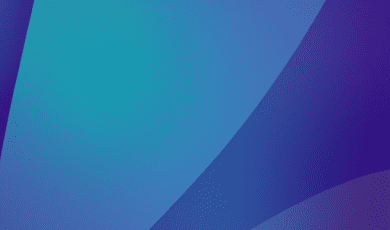
As stress levels rise worldwide, more people are searching for ways to understand and manage their mental wellbeing before problems escalate. Subtle mood changes, disrupted sleep, or persistent worry often appear long before a diagnosable condition develops, yet they’re easy to dismiss or miss entirely. That’s where intelligent digital support systems are beginning to step in, helping individuals notice patterns in their behavior and emotions earlier than ever before.
Modern AI tools can analyze huge volumes of personal data in real time, revealing trends humans might overlook. By examining everything from how we type to how we sleep, these systems can flag potential concern areas and empower users to seek help or adjust habits sooner. Below is a breakdown of how these technologies are transforming early recognition of emotional distress, along with what you should consider before relying on them.
1. Tracking Daily Habits for Subtle Behavioral Shifts
Many signs of mounting tension or persistent worry show up first in everyday routines. Changes in sleep duration, activity levels, or social engagement can indicate that something is off. Digital platforms can quietly monitor this kind of information and highlight unusual deviations over days or weeks.
When a system sees that someone is suddenly canceling events, staying up much later, or barely moving from their desk, it can surface insights that might otherwise stay hidden. This ongoing tracking helps people recognize patterns more objectively, which is especially useful if they’re used to minimizing their own discomfort.
2. Analyzing Language Patterns in Messages and Journals
The words people choose often reflect their internal state. Repeated phrases centered on fear, uncertainty, or self-criticism can be subtle indicators that tension is building. Intelligent language models are designed to spot patterns like these across texts, chats, or digital journals.
By assessing tone, intensity, and repetition, these systems can flag when someone’s written communication becomes more negative, self-focused, or ruminative. Instead of making medical judgments, they can simply point out trends, encouraging the user to reflect or talk with a professional if needed.
3. Monitoring Sleep Quality and Rest Patterns
Sleep disruption is one of the most common early indicators that mental wellbeing may be under strain. Fragmented rest, difficulty falling asleep, or waking up too early can all align with an overactive mind. Wearables and smartphone sensors now make it easy to monitor sleep duration, regularity, and movement.
Intelligent systems can compare current sleep data to a person’s usual baseline, flagging persistent changes that might deserve attention. When combined with other markers—such as daytime fatigue or reduced activity—these insights become even more meaningful, encouraging earlier lifestyle changes or professional consultation.
4. Observing Physical Activity and Energy Levels
A sudden drop in exercise, fewer steps, or slower movement may signal that someone is feeling overwhelmed or unmotivated. Conversely, restlessness and constant pacing can also be a response to heightened inner tension. Modern devices collect this type of motion data throughout the day.
Systems that interpret this information over time can show clear visual trends: weeks with low movement, abandoned exercise routines, or unusual bursts of restless activity. These visual cues help users connect how they feel with how they move, making it easier to identify when something in their emotional life is shifting.
5. Interpreting Voice Tone and Speech Patterns
The way someone speaks can reveal as much as the words they use. Changes in pitch, speed, pauses, and volume can correlate with internal tension or worry. With permission, some systems can analyze voice notes, calls, or recorded reflections.
When speech becomes noticeably faster, more pressured, or marked by long hesitant pauses, the system may detect these shifts and record them as potential early indicators of emotional strain. While this analysis is not a substitute for professional evaluation, it can give users an extra lens on their own communication style.
6. Combining Multiple Data Sources for a Clearer Picture
One data stream alone rarely tells the whole story. Maybe a person is sleeping less but exercising more, or walking more but withdrawing from social activities. Systems that combine several sources—sleep, activity, language, and more—can build a richer picture of an individual’s overall state.
By recognizing patterns across different areas of life, these technologies are better able to highlight when multiple subtle changes coincide. This multi-layered approach reduces the risk of overreacting to one-off fluctuations and instead focuses on sustained trends that might indicate a growing concern.
7. Providing Early Alerts and Gentle Check-Ins
One of the most valuable features of intelligent monitoring is the ability to send timely, supportive prompts. When the system notices repeated deviations from a user’s typical behavior or mood, it can suggest simple actions: taking a break, journaling, practicing breathing exercises, or contacting a trusted person.
These prompts act as gentle reminders that something has shifted and that it might be worth paying attention. For many people, just seeing the data visualized—sleep graphs, word clouds, or movement charts—can be enough to validate what they’re feeling and motivate them to seek support sooner.
8. Supporting, Not Replacing, Mental Health Professionals
While these systems can uncover early signs of distress, they are not diagnostic tools and should never be treated as a replacement for a qualified clinician. Instead, they complement traditional care by giving both individuals and professionals more information about daily patterns between appointments.
Users can share relevant charts or summaries during therapy or medical visits, offering a more accurate account than memory alone. This collaboration can lead to more tailored recommendations, earlier interventions, and a stronger sense of partnership in managing mental wellbeing.
9. Addressing Privacy, Consent, and Data Security
Any system that analyzes personal data raises important questions about privacy and control. Individuals need clear information about what is being collected, how it is stored, and who can access it. Transparent policies and robust encryption are essential.
Before adopting any platform, people should have the option to opt in to specific features, disable data sharing, delete historical records, and understand how their information is used to generate insights. Ethical design and strong safeguards are crucial for building trust in these emerging tools.
10. Empowering People to Act Sooner
Ultimately, the value of these technologies lies not just in detection but in empowerment. By making invisible patterns visible, they help individuals understand their own emotional landscape better. Early awareness can lead to earlier conversations, lifestyle changes, or professional guidance.
When people can see, in concrete data, how their sleep, activity, and communication are shifting over time, they are more likely to take their own experience seriously. That shift—from ignoring warning signs to acknowledging them—can make a significant difference in how quickly they receive support.
Conclusion: Using Intelligent Support as an Early Lens on Wellbeing
Intelligent monitoring systems are reshaping how we notice and respond to early signs of emotional strain. By tracking daily habits, language, sleep, movement, and speech patterns, they offer a clearer window into subtle changes that might otherwise go unnoticed.
However, these systems work best when framed as guides, not judges. They can prompt reflection, encourage self-care, and support conversations with professionals, but they cannot provide a definitive assessment of mental health. Used thoughtfully, they become part of a broader toolkit—one that helps people pay attention sooner, take their experiences seriously, and seek help when they need it most.








